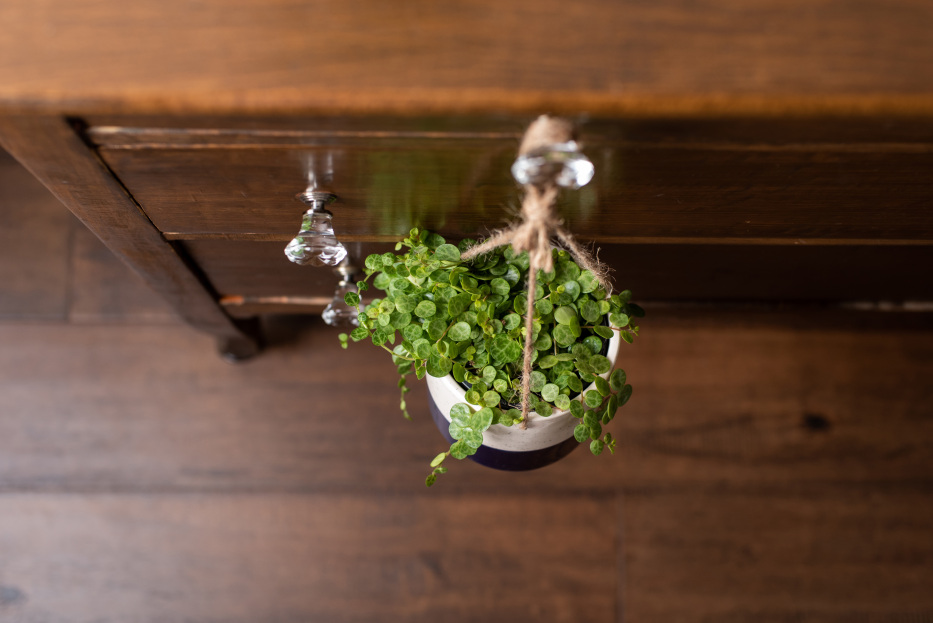
String of Turtles love to be in bright in-direct sunlight. Keeping them in direct sunlight for too long will increase the chances of damaging its leaves. However not giving it enough light can stunt its growth and prevent it from growing further. Another key point to note is ensuring that light reaches the top of your plant.
People often place String plants in high areas or hanging baskets because of their great trailing appearance. But when they are placed up at a higher level, they might not get the light they desire. Make sure that light reaches all parts of your plant especially the top soil and foliage at the top of your plant to ensure it gets the sunlight it needs.
You may be used to using a premix soil for your cactus and succulents – which is fine if that’s all that you can obtain. However, String of Turtles may benefit from a soil mix that’s higher in organic matter.
A potting mix that is rich in peat is best suited for this plant. You can find this in commercial seed starting mix. Ensure that the soil is well draining too.
String of Turtles are also a highly drought tolerant plant. They are native to rainforests so keeping them in slightly moist conditions is where they do best. Let your String of Turtles soil dry out between watering's and don’t over saturate the soil when watering. When watering into a pot without drainage holes, be sure to discard any excess watering sitting at the bottom of your pot to prevent root rot or pests.
Fertilizing your String of Turtles will help your plant maintain its bright and shiny appearance, as well as will preserve the colour and pattern on its leaves. Feed your String of Turtles with a diluted organic houseplant fertilizer.
You can feed them biweekly during their growing season but ensure that during the fall and winter months that you stop fertilizing them, as they become dormant and should not be fed during this time.
Just like the String of Dolphins, the String of Turtles also prefer cooler and more humid temperatures over the warmer temperatures that most succulents prefer.
Keeping your String of Turtles in a consistent temperature range from 68 -75 Degrees Fahrenheit is ideal. Since they are a succulent, they still do not enjoy extremely cold temperatures, avoid placing them somewhere where they can be hit with cold air such as from a draft or Air Conditioner.
During the dryer months when a heater is usually running indoors – you may want to mist your plant lightly or run a humidifier to help increase the humidity for your plants.
String of Turtles can be reproduced via stem cuttings. Begin by trimming a healthy stem using a clean, sterilized blade, and let the cut portion dry and form a callus over a period of one to two days. Subsequently, insert the cutting into a substrate with good drainage, ensuring it remains slightly moist until root formation occurs
String of Turtles (Peperomia prostrata) is typically considered pet-safe as it is a peperomia. However keeping your plant away from your pets is always a good idea
If you notice your string of trutles leaves become soft and squishy then unfortunately your plant has been overwatered. Let your plants soil dry out and trim off any dead foliage
If you notice your string of turtles fading in color or changing in color then you may need to bring your plant to a slightly less bright location
Yes your String of Turtles can flower.
Parts of the stem on your plant may loose foliage or fall of due to the plants soil drying out too much at the top. String of Turtles have a delicate root system and if exposed to longer periods of dry soil then it may cause your plant to loose or have its foliage dry up. If you bottom water your plant, ensure to mist or water the top of your plants soil to ensure that its entire root system is saturated when watering.